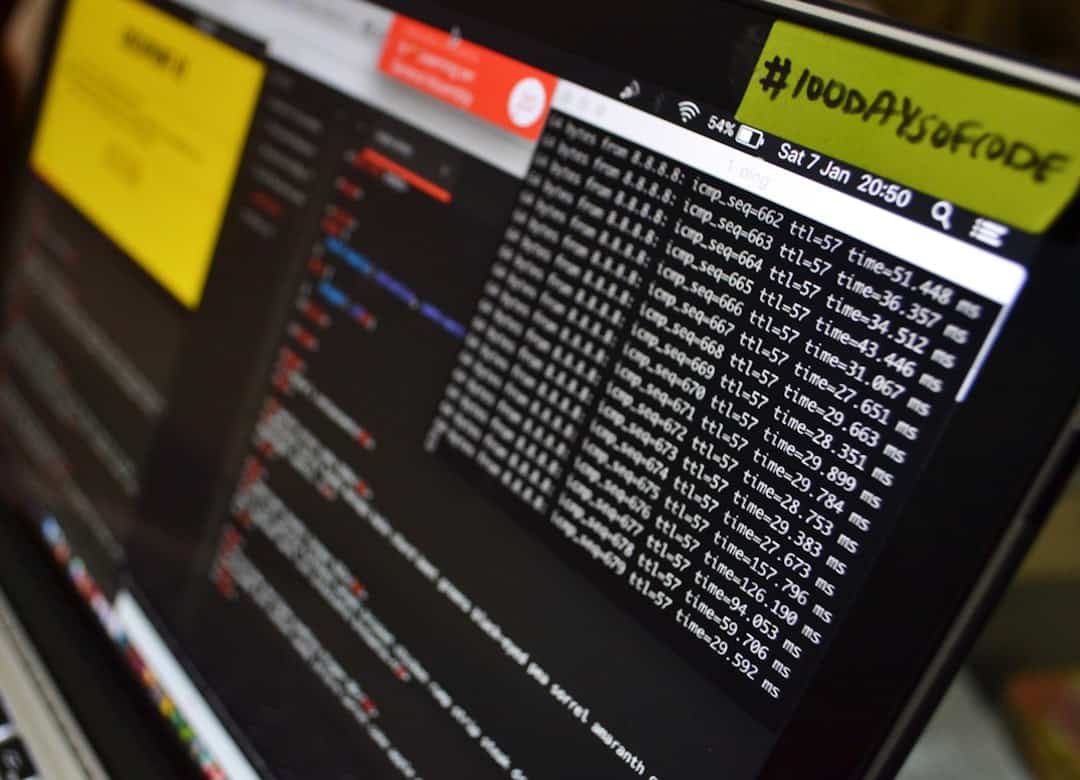Security patches are critical updates released by software developers to address vulnerabilities and security flaws in their products. These vulnerabilities can be exploited by malicious actors to gain unauthorized access, compromise data, or disrupt system operations. The primary purpose of security patches is to maintain software and system integrity by mitigating these vulnerabilities and protecting against potential cyber threats.
Upon discovery of a security vulnerability, software vendors develop and release patches or updates to resolve the issue. These patches may be distributed as software updates, hotfixes, service packs, or other forms of releases, depending on the specific software and the nature of the vulnerability being addressed. Organizations and individuals must remain vigilant about security patches for their software and systems.
Failure to install these updates can leave systems exposed to cyber attacks. Staying informed about and promptly applying security patches is a crucial step in protecting digital assets and reducing the risk of security breaches.
Key Takeaways
- Security patches are updates designed to fix vulnerabilities and improve the security of software and systems.
- Ignoring security patches can leave systems and data vulnerable to cyber attacks and compromise the overall security of an organization.
- Regularly updating security patches can help prevent security breaches, protect sensitive data, and maintain the integrity of systems and networks.
- Best practices for installing security patches include prioritizing critical updates, testing patches in a controlled environment, and keeping a record of patch installations.
- Staying informed about security patch releases involves subscribing to vendor notifications, following security blogs and news sources, and participating in security communities and forums.
- Security patches play a crucial role in preventing cyber attacks by addressing known vulnerabilities and reducing the attack surface for potential threats.
- The future of security patches involves trends such as automated patch management, machine learning for vulnerability detection, and the integration of security patching into DevOps processes.
The Risks of Ignoring Security Patches
Ignoring security patches can have serious consequences for individuals and organizations. When vulnerabilities are left unpatched, cybercriminals can exploit them to gain unauthorized access to systems, steal sensitive information, or launch attacks that disrupt operations. In some cases, these attacks can have far-reaching implications, leading to financial losses, reputational damage, and legal liabilities.
One of the main risks of ignoring security patches is the increased likelihood of falling victim to cyber attacks. Hackers are constantly scanning for unpatched systems and exploiting known vulnerabilities to carry out their malicious activities. By failing to install security patches in a timely manner, users are essentially leaving the door open for cybercriminals to infiltrate their systems and wreak havoc.
Another risk of ignoring security patches is the potential for compliance violations. Many industries and regulatory bodies have specific requirements for maintaining the security of digital systems and protecting sensitive data. Failing to install security patches can result in non-compliance with these regulations, leading to fines, penalties, and other legal consequences.
The Benefits of Regularly Updating Security Patches

Regularly updating security patches offers a range of benefits for individuals and organizations. By staying current with security patches, users can reduce the risk of security breaches, protect sensitive information, and maintain the integrity of their systems. Here are some key benefits of regularly updating security patches: 1.
Enhanced Security: By installing security patches in a timely manner, users can close known vulnerabilities and reduce the risk of unauthorized access and data breaches. This helps to strengthen the overall security posture of their systems and protect against a wide range of cyber threats. 2.
Improved Performance: In addition to addressing security issues, security patches often include performance improvements and bug fixes that can enhance the stability and functionality of software and systems. Regularly updating security patches can help ensure that users are benefiting from the latest features and optimizations. 3.
Compliance: Regularly updating security patches can help organizations maintain compliance with industry regulations and data protection laws. By demonstrating a commitment to security best practices, organizations can reduce the risk of legal liabilities and reputational damage. Overall, regularly updating security patches is an essential part of maintaining the security and reliability of digital systems.
By staying current with security patches, users can minimize the risk of security breaches, protect sensitive information, and demonstrate a commitment to best practices in cybersecurity.
Best Practices for Installing Security Patches
| Best Practices for Installing Security Patches |
|---|
| 1. Regularly check for security updates |
| 2. Prioritize critical patches |
| 3. Test patches in a controlled environment |
| 4. Create a backup before installing patches |
| 5. Keep track of patch installation and status |
Installing security patches effectively requires following best practices to ensure that updates are applied in a timely and reliable manner. Here are some best practices for installing security patches: 1. Stay Informed: Keep track of security patch releases for the software and systems you use.
Subscribe to vendor notifications, security bulletins, and industry news sources to stay informed about new vulnerabilities and available patches. 2. Prioritize Critical Patches: Not all security patches are created equal.
Prioritize critical patches that address severe vulnerabilities or have a high likelihood of being exploited by cybercriminals. Focus on installing these patches as soon as possible to minimize risk. 3.
Test Patches: Before deploying patches in a production environment, test them in a controlled environment to ensure that they do not cause any compatibility issues or disruptions. This can help prevent unexpected downtime or performance issues. 4.
Develop a Patch Management Process: Establish a formal patch management process that outlines roles and responsibilities for patch deployment, testing procedures, and timelines for installation. This can help ensure that patches are applied consistently and efficiently across an organization. By following these best practices, organizations and individuals can improve their patch management processes and reduce the risk of leaving vulnerabilities unaddressed.
How to Stay Informed about Security Patch Releases
Staying informed about security patch releases is essential for maintaining the security of software and systems. There are several strategies that individuals and organizations can use to stay up-to-date on security patch releases: 1. Subscribe to Vendor Notifications: Many software vendors offer email notifications or RSS feeds that provide updates on new security patches and releases.
Subscribing to these notifications can help ensure that users are aware of critical updates as soon as they become available. 2. Monitor Security Bulletins: Security bulletins from vendors and industry organizations provide detailed information about new vulnerabilities and available patches.
Regularly monitoring these bulletins can help users understand the potential risks they face and take appropriate action to address them. 3. Follow Industry News Sources: Industry news sources, blogs, and forums often provide insights into emerging threats and vulnerabilities.
By staying informed about industry developments, users can proactively address potential security risks before they become widespread issues. 4. Utilize Patch Management Tools: Patch management tools can help automate the process of identifying, testing, and deploying security patches across an organization’s systems.
These tools can streamline patch management efforts and ensure that updates are applied consistently. By leveraging these strategies, individuals and organizations can stay informed about security patch releases and take proactive steps to protect their digital assets from potential threats.
The Role of Security Patches in Preventing Cyber Attacks

Security patches play a critical role in preventing cyber attacks by addressing known vulnerabilities in software and systems. By closing these vulnerabilities, security patches help to reduce the attack surface available to cybercriminals and make it more difficult for them to exploit weaknesses in digital infrastructure. One of the key ways that security patches prevent cyber attacks is by addressing known vulnerabilities before they can be exploited by malicious actors.
When a vulnerability is discovered, software vendors work quickly to develop a patch that closes the vulnerability and protects users from potential attacks. By installing these patches in a timely manner, users can effectively neutralize the threat posed by known vulnerabilities. In addition to addressing specific vulnerabilities, security patches also contribute to overall cybersecurity resilience by promoting a proactive approach to risk management.
By regularly updating security patches, users demonstrate a commitment to maintaining the security of their systems and staying ahead of potential threats. This proactive stance can help deter cybercriminals who may be looking for easy targets with unpatched vulnerabilities. Overall, security patches play a crucial role in preventing cyber attacks by addressing known vulnerabilities and promoting a proactive approach to cybersecurity risk management.
The Future of Security Patches: Trends and Developments
The future of security patches is likely to be shaped by several key trends and developments in the cybersecurity landscape. As technology continues to evolve, new challenges and opportunities will emerge that will influence how security patches are developed, deployed, and managed. One trend that is likely to shape the future of security patches is the increasing complexity of digital ecosystems.
As organizations adopt cloud services, IoT devices, and other emerging technologies, the attack surface available to cybercriminals will expand, creating new challenges for patch management. In response, security patching processes may need to become more automated and integrated with broader cybersecurity strategies to effectively address vulnerabilities across diverse environments. Another trend that will impact the future of security patches is the growing sophistication of cyber threats.
As cybercriminals develop more advanced attack techniques, the need for rapid response to emerging threats will become increasingly important. This may lead to more agile approaches to patch development and deployment that enable vendors to release updates more quickly in response to evolving threats. Additionally, the future of security patches may be influenced by developments in artificial intelligence (AI) and machine learning (ML) technologies.
These technologies have the potential to enhance vulnerability detection and response capabilities, enabling more proactive identification and mitigation of potential threats. As AI and ML become more integrated into cybersecurity practices, they may play a larger role in identifying vulnerabilities and developing effective patching strategies. Overall, the future of security patches is likely to be shaped by trends such as increasing digital complexity, evolving cyber threats, and advancements in AI and ML technologies.
By staying abreast of these developments, organizations can prepare for the challenges and opportunities that lie ahead in the realm of cybersecurity patch management.
If you’re interested in learning more about the impact of technology on virtual worlds, you should check out this article on the significance and impact of the metaverse. It discusses how virtual worlds are becoming more integrated into our daily lives and the potential implications for society. (source)
FAQs
What are security patches?
Security patches are updates or fixes released by software vendors to address vulnerabilities or weaknesses in their software. These vulnerabilities could potentially be exploited by attackers to compromise the security of the system.
Why are security patches important?
Security patches are important because they help to protect systems and software from potential security threats. By applying security patches, users can reduce the risk of their systems being compromised by known vulnerabilities.
How often are security patches released?
The frequency of security patch releases varies depending on the software vendor and the severity of the vulnerabilities. Some vendors release patches on a regular schedule, while others release patches as needed in response to specific security threats.
How can I ensure that my system is up to date with security patches?
To ensure that your system is up to date with security patches, it is important to regularly check for updates from the software vendor. Many vendors provide automatic update mechanisms that can be enabled to ensure that patches are applied as soon as they are released.
What are the risks of not applying security patches?
Not applying security patches can leave systems vulnerable to exploitation by attackers. This can result in unauthorized access to sensitive information, system downtime, and potential damage to the reputation of the affected organization.
Are there any best practices for applying security patches?
Some best practices for applying security patches include regularly checking for updates, testing patches in a controlled environment before applying them to production systems, and maintaining a comprehensive inventory of software and systems to ensure that all relevant patches are applied.











Leave a Reply